Culture, Food and Top Things to Do in Luang Prabang
Discover where to stay, what to eat, and what to see and do in this multicultural city, from the night market in Luang Prabang to the Kuang Si waterfall a short distance out of town.
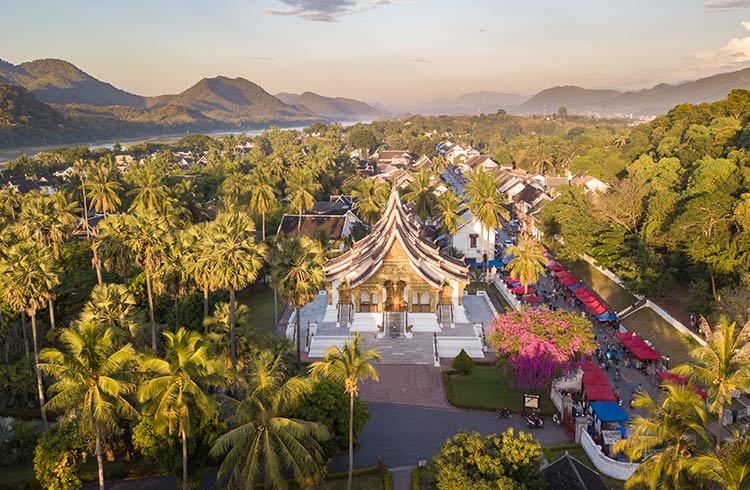 Photo © Getty Images/Marcin Kilarski
Photo © Getty Images/Marcin Kilarski
Luang Prabang was the last stop on our month-long backpacking trip through Laos, the only landlocked country in southeast Asia. After biking the Bolaven Plateau, and spotting rare Irrawaddy dolphins in the 4,000 Islands, we were ready for a taste of local culture.
Laos was once a part of French Indochina, and ruled by France from 1893 until Laos’ independence in 1954. French-speaking Laotians, picturesque European-style buildings, and hints of France in the food (think bakeries, pâtisseries and bistros), are all remnants of this time. But with traditional wooden houses and dazzling temples, Luang Prabang has plenty of Laos culture too.
Located where the Mekong and Nam Khan rivers meet, and surrounded by mountains, Luang Prabang is becoming more popular with travelers, and although it may not be the most budget-friendly destination in the region, it’s not to be missed.
- Food to try in Luang Prabang
- Places to stay in Luang Prabang
- Things to do in Luang Prabang
- The changing face of Luang Prabang
Food to try in Luang Prabang
From cheap eats to fine dining, there’s no shortage of quality food in Luang Prabang. Start the day with some people-watching at any of the streetside cafes in town, while enjoying tasty pastries at affordable prices (around US $2 apiece). Get your caffeine boost and a pain au chocolat – a very French way to start the day.
For lunch, after returning from a morning excursion, you can either walk across the Nam River by bamboo bridge to one of the restaurants on the other side, or stick around for a bite to eat on Sisavangvong Road and the other roads that run along the Mekong and Nam Rivers.
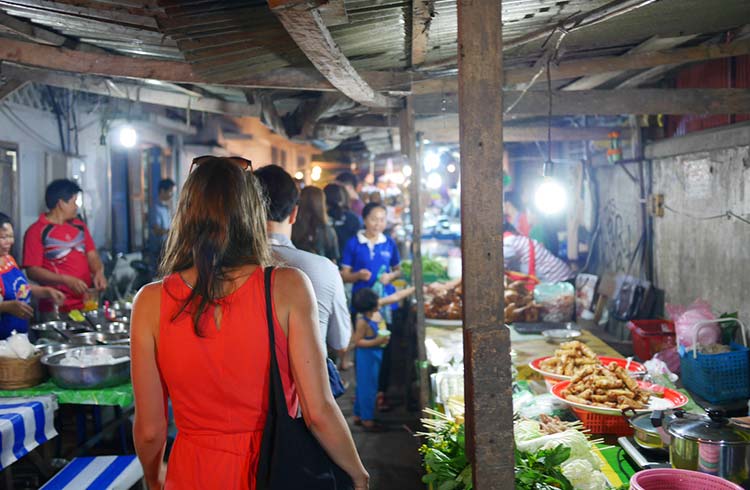
You’ll find a wide variety of foods on offer along Sisavangvong Road, from traditional Lao dishes (buffalo sausage, khao soi soup made with mincemeat and clear noodles, fermented fish stew, and spring rolls) to high-end French fare. Another excellent spot for finding cheap eats is the street between the night market end of Sisavangvong Road and the Mekong River.
A must-try meal in Laos is sin dat (also called Laos Fondue or Laos Hot Pot) and you can find it at a few restaurants around town. This dish is served from a communal hot pot, kept hot by burning coals. You cook your own meat, vegetables and noodles, either by poaching them in the flavorful broth, or grilling them. These hot pots typically cost around US $10 for two for a sit-down meal. Or, if you’re traveling solo, you can order a smaller pot all to yourself.
Once dinner rolls around, you might still be full from the hot pot lunch, so head to the night market and have a light meal of chicken on a stick, or grilled vegetables.
Note: while dining alongside the river, make sure you bring some insect repellent.
Places to stay in Luang Prabang
From boutiques and upscale hotels to hostels and guesthouses, there are options for all budgets in Luang Prabang. The town is a hotspot for package tours and because of this, there are many more luxury accommodations opening. If you want to stay in the posh area near the tip of the peninsula, or in a building in the old town with Mekong River views, expect to shell out a lot of money each night. These luxury rooms are around US $100/night.
But, don’t be discouraged, there are still some gems to be found on a backpacker’s budget. When searching for somewhere to stay on a shoestring, check out the road between the post office and the river, or the narrow lanes that jut off of Phomathat Road.
A great option is Oui’s Guesthouse, located on prime real estate at the tip of the peninsula, and costs around US $40/night – including breakfast.
Things to do in Luang Prabang
Kuang Si waterfalls
This is one of the most popular things to do in Luang Prabang, if not Laos as a whole. A visit to these multi-tiered limestone falls will have you cooled off in no time. It’ll take you about 45 minutes in a songthaew (shared bus or taxi), or opt for a motorbike, taxi, van, or boat. Once you reach the cascading falls with turquoise blue pools, there’s nothing left to do but jump in.
Undoubtedly, you’ll be sharing the natural hotspot with numerous other travelers, but if you want to enjoy the area with fewer crowds, continue hiking up the path. Many travelers are mesmerized by the flowing water and end up staying at the bottom tier. But, if you continue uphill through the jungle you’ll be rewarded with quieter falls and panoramic views.
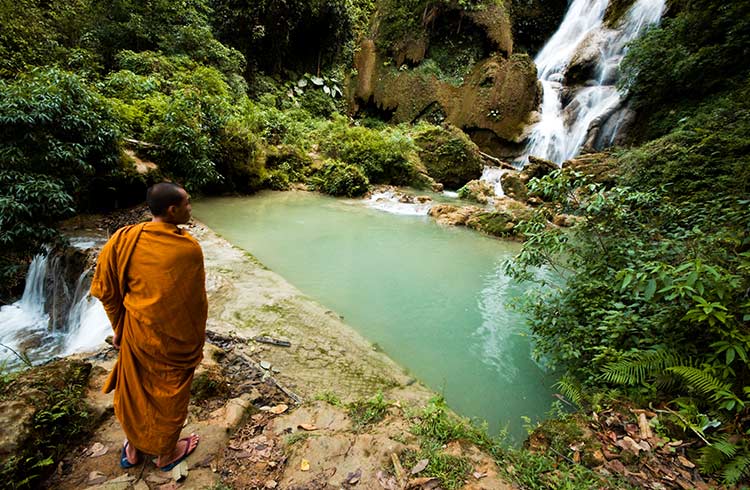
The cost of a songthaew here is 60,000 kip (about US $4) return per person. If you want to hire a private Tuk Tuk to take you to the falls, expect to pay around US $25 for the return journey, but, as with most things in southeast Asia, this price depends on your bargaining skills.
The entrance fee is 25,000 kip (US $1.20). There are some street stalls at the entrance to the falls, but pack your own water bottle, bathing suit, towel and some snacks if you want.
Luang Prabang night market
Sisavangvong Road is closed off and vendors came from all over to set up stalls for the popular night market, which sells local jewelry and crafts, and opens from 5pm to 10pm.
Not only is the night market a must-do if you're looking to shop for souvenirs, clothing, or trinkets, but it’s the spot to chow down on some tasty local street eats. Grab yourself some chicken on a skewer and wander the stalls.
Cooking classes
Although the food in Laos has some French influences with numerous restaurants serving French meals, Laos still retains its own distinct dishes, ingredients and flavors, including lemongrass, kaffir lime and garlic. There’s nothing better than learning how to cook local food and returning home to recreate the feast for your friends.
There are a couple of good options for cooking classes in Luang Prabang. Check out Tamarind cooking class, which includes a trip to the market to pick out ingredients for your dishes – jeow (dipping sauces), herbed fish, lemongrass stuffed with chicken, minced meat salad, sticky rice, and dessert. The class is a full-afternoon event, or there's also a shorter eventing class without the market trip.
Pak Ou caves
Hop on a boat and cruise up the Mekong for about two hours before reaching the Pak Ou Caves, which are unmissable due to the many boats parked out front. You can actually get here by Tuk Tuk as well, but the boat journey is much more enjoyable. For over 500 years, these caves have been a popular pilgrimage site, with the first pilgrims leaving behind a Buddhist idol. These days, there are thousands of Buddha images and statues inside the limestone caves.
Be forewarned, before reaching the caves, the boat will stop at a whiskey village to learn about the making of Lao Lao Whiskey, with hopes that you’ll purchase a bottle, although it’s not mandatory to buy. It’s around 65,000 kip (US $3) per person for a spot on the boat, and entrance to the caves will cost you around US $2.50.
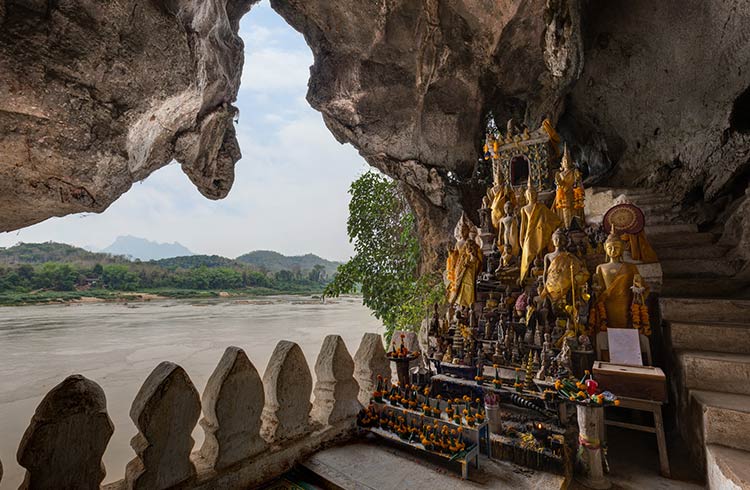
See the glittering temples of Luang Prabang
Don’t miss the incredibly ornate Royal Palace (Haw Pha Bang) with its gold exterior, multi-tiered roof and steps leading up to the arched entrance. Inside you’ll find a statue of the highly revered Phra Bang Buddha.
The New Temple (Wat Mai Suwannaphumaham), which was built in the 18th century, now with more recent restorations, is one of the largest and most popular temples to visit in Luang Prabang. It was once the temple for the Royal Family and is home to the Pra Sangkharat, the highest Buddhist dignitary in Laos. You’ll find the New Temple right next to the Royal Palace.
In contrast to the glimmering Royal Palace, Wat Pa Phai is a wooden temple that has incredible frescoes depicting life in Laos in the late 19th century. You may find some monks who are eager to practice their English with you.
Finally, just a couple of miles outside of the center is the forest monastery of Wat Phon Phao. Set in a lush forest setting, this golden temple features pretty windows and balconies, while inside you’ll find bright paintings. Visit during the day or at sunset when it’s cooler and the light is golden.
A great way to see these sites is to hire a bicycle for the day and explore at your own pace. Most guesthouses, hostels,
The changing face of Luang Prabang
Luang Prabang has become much more popular over the years, with travelers descending on this colonial town by the thousands. It’s putting a strain on the culture, religion, and architecture. Locals are selling their homes to be turned into hotels, and tourists are shoving cameras into the faces of monks who are trying to receive their daily alms.
Respect the history, culture, and religion and consider where your dollars are going when you’re here. If you don’t mind humidity and the occasional downpour, try to time your visit for the shoulder/off-season (March–October) when there are fewer crowds. We can only hope Luang Prabang will retain its traditions and charm for years to come.
Updated March 2024.
Related articles
Simple and flexible travel insurance
You can buy at home or while traveling, and claim online from anywhere in the world. With 150+ adventure activities covered and 24/7 emergency assistance.
Get a quote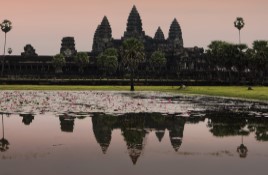

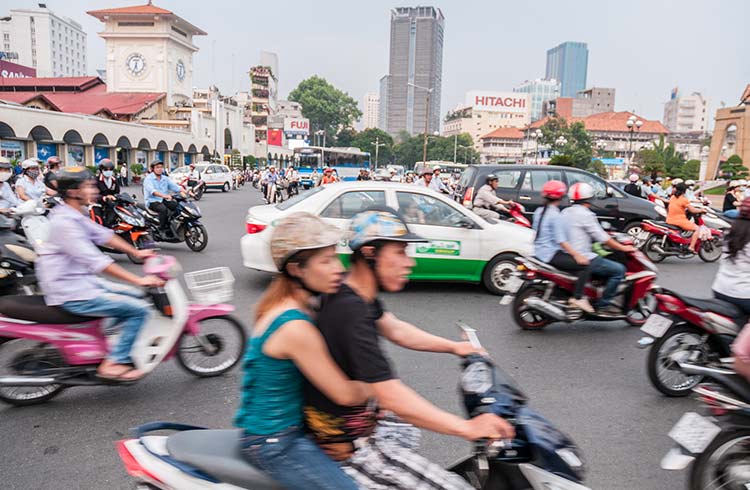
No Comments